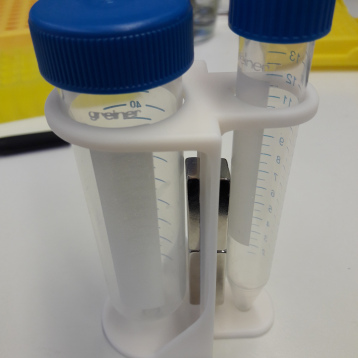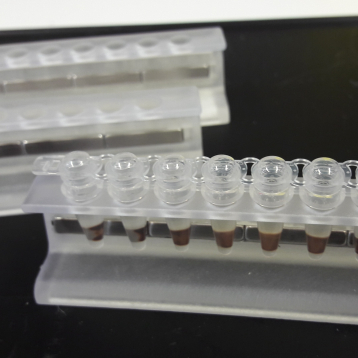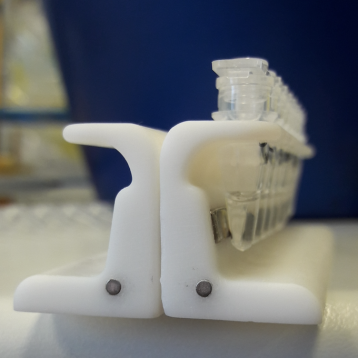One thing we’re particularly passionate about at 3DPrint.com is when 3D printing is an enabler. When our technology is used to radically change others lives, industries and practices through being a force multiplier for them. In custom prosthetics, we can see huge impacts in people’s lives because 3D printing can make tough inexpensive prosthetics. This is still one of the most inspiring examples so far of the desktop side of our industry making an impact. Another thing that could operate in a similar manner is for 3D printing to be harnassed for lab equipment and scientific research. Lab equipment and all manner of scientific tools have been hampered by high costs and the fact that many things are low volume and may even be unique. Jars, testing vessels, tests, holders, housings and the like can cost four or forty times more than a comparable item in another industry. This slows down science by making it needlessly expensive. This means that we as a world are learning less quickly than we could because of a few companies making outsized margins in niches. This is a particular problem that 3D printing can help solve in many areas and we will see this happening again and again.

The Custom-Lab Institute has just gotten started but it and many initiatives like it could really bring down the cost of scientific testing. The custom lab uses stereolithography to make lab equipment for less. Whats more, this equipment can be customized to the user’s needs. We interviewed Uli Lutz who is a Biologist at the Max Planck Institute for Developmental Biology and founded the Custom Lab.
Why are researchers 3D printing their own lab equipment?
Researchers started to print lab equipment for several reasons. I think the main motivations are the reproduction and optimization of equipment, which is already available on the market but hopelessly overpriced and not fitting specific needs. Further, researchers often deal with highly specific problems, which require highly specific tools not available on the market. These tools often are surpisingly simple, but help to save a lot of time.
What kind of 3D printed lab equipment is there?
The spectrum of 3D printed lab equipment got quite broad in the last few years. On the one hand, there are simple but helpful tools like reaction tube racks, which fit specific needs (e.g. tube number, or in which angle the tube is kept). On the other hand, 3D printing helps researchers to develop more complicated instruments like for example microscopes. Its kind of an irony that scientists are always all about sharing information and yet they for free supply publishers with articles and these then get locked away behind closed doors.

Open Lab Equipment, from the Custom Lab.
Is the open part of the equation important to you?
Yes, it’s a fundamental part. The whole project is inspired by the open-science-hardware movement.
Why do you use SLA?
We decided to start with SLA because we liked the fine structure, high precision and the stability of the prints, all being important for the project I had in mind when started with 3D printing in the lab. For sure, other technologies might become more interesting for future projects!
Don’t you worry that test samples may react with the SLA resins?
No, that’s not an issue, because all tools are used in combination with special reaction tubes. The samples never get in contact with any part of the 3D printed tools.

3D Printed Lab Equipment
Is this a business for you?
No. It’s rather an experiment, to figure out whether the spectrum of users of open science hardware can be expanded by offering the tools ready-to-use, to thereby circumvent the still limited accessibility of 3D printing hardware for researchers.
What kind of things do you see researchers print in the future?
All kinds of. Better accessibility, easier usability and newer technologies of 3D printing will help researchers to realize even more specific ideas. I hope that very soon every institute or university department will have a 3D printer to print own designs and to reproduce designs deposited at repositories by colleagues.
We applaud this initiative and can’t wait to see more 3D printed science the world over. Check out the Custom-Lab Institute here.
Subscribe to Our Email Newsletter
Stay up-to-date on all the latest news from the 3D printing industry and receive information and offers from third party vendors.
You May Also Like
3D Printing Financials: Steakholder Foods Balances Losses and 3D Printed Tech Advances in 2023
A pioneer in the field of 3D printed meat and fish, Steakholder Foods (Nasdaq: STKH) disclosed its 2023 financial results, a year highlighted by technological progress but overshadowed by financial...
3D Printing Financials: Protolabs’ Q1 3D Printing Revenue is Flat, Company Advances in Technology Push
Protolabs (NYSE: PRLB) has kicked off 2024 with a mild boost in revenue, revealing how the Minnesota-based company manages to adapt and thrive even in uncertain market conditions. While the...
Supply Chain Management and the Role of 3D Printing Digital Inventories
As the additive manufacturing (AM) industry grows beyond its humble roots as a rapid prototyping technology, it has been adopted by some of the world’s leading companies to produce not...
3D Printing Financials: Materialise’s Profitability Amid Revenue Dip in Q1 2024
Materialise (Nasdaq: MTLS) has released its first-quarter earnings for 2024, highlighting a challenging quarter with some key advances despite a dip in revenue. While navigating a mixed performance across its...































